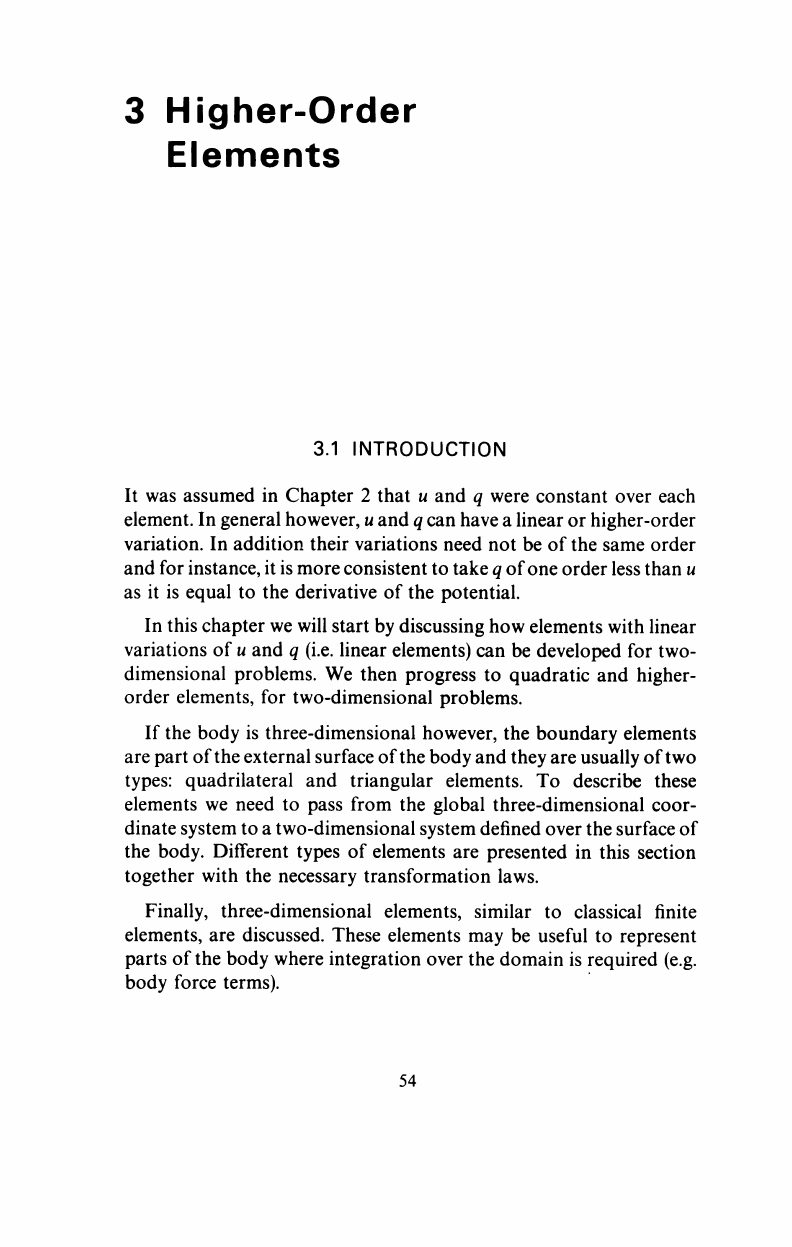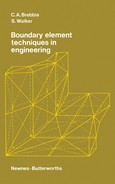
3 Higher-Order
Elements
3.1 INTRODUCTION
It was assumed in Chapter 2 that u and q were constant over each
element. In general however, u and q can have a linear or higher-order
variation. In addition their variations need not be of the same order
and for instance, it is more consistent to take q of one order less than u
as it is equal to the derivative of the potential.
In this chapter we will start by discussing how elements with linear
variations of u and q (i.e. linear elements) can be developed for two-
dimensional problems. We then progress to quadratic and higher-
order elements, for two-dimensional problems.
If the body is three-dimensional however, the boundary elements
are part of the external surface of the body and they are usually of two
types:
quadrilateral and triangular elements. To describe these
elements we need to pass from the global three-dimensional coor-
dinate system to a two-dimensional system defined over the surface of
the body. Different types of elements are presented in this section
together with the necessary transformation laws.
Finally, three-dimensional elements, similar to classical finite
elements, are discussed. These elements may be useful to represent
parts of the body where integration over the domain is required (e.g.
body force terms).
54
..................Content has been hidden....................
You can't read the all page of ebook, please click here login for view all page.
